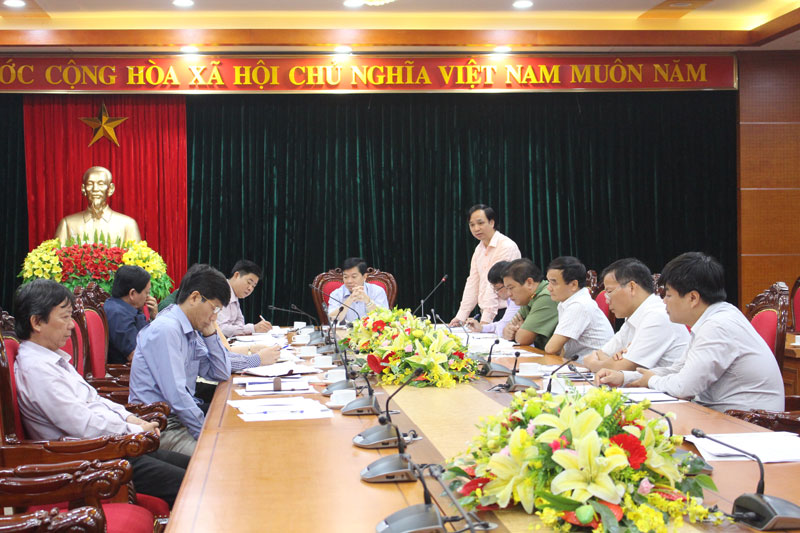
(HBO) – Hoa Binh province’s organising board of the ASEAN photo and documentary exhibition met to discuss preparations for the event, which will take place in Hoa Binh province from November 23-25. The exhibition will feature land, people, environmental protection, climate change and ethnic groups in ASEAN. Nguyen Van Chuong, Vice Chairman of the provincial People’s Committee, head of the board, presided over the meeting.

The provincial organising board
implements the preparatory plan for the ASEAN photo and documentary exhibition.
The exhibition, scheduled to be held at the Hoa Binh Cultural
Palace, will focus on the themes of land and people; environmental protection
and climate change; and ethnic groups within the ASEAN Community.
It will introduce more than 300 photos and 100 documentary films
by ASEAN photographers and directors who entered the final of the ASEAN photo
and documentary festival held in
Vietnam in 2010, 2013 and 2015.
The event is expected to promote the land and people of ASEAN,
helping Vietnamese in general and residents in Hoa Binh in particular increase
their understanding, solidarity and friendship with people in other ASEAN
member countries.
Through the exhibition, Hoa Binh will introduce its potential and
strengths in socio-economic development, as well as traditional culture to
international friends.
Concluding the meeting, Chuong said the exhibition is a
political-cultural event of Hoa Binh province this year.
He asked members of the board to soon fulfill their assigned tasks
to make the event impressive to domestic and foreign visitors.
With an increasingly vibrant and widespread emulation movement aimed at building cultured residential areas and cultured families, Yen Thuy District has been making steady progress toward improving both the material and spiritual well-being of its people, while fostering a civilized, prosperous, beautiful, and progressive community.
Once lacking recreational spaces and community facilities, Residential Group 2 in Quynh Lam Ward (Hoa Binh City) has recently received attention for the construction of a new, spacious, and fully equipped cultural house. The project followed the model of state support combined with public contributions in both labor and funding.
The "All people unite to build cultural life" movement, which has been effectively integrated with Kim Boi district’s socio-economic development goals, is fostering a lively spirit of emulation across local residential areas, hamlets, villages, public agencies, and enterprises. In addition, through the initiative, traditional cultural values are being preserved and promoted, while community solidarity and mutual support in poverty reduction and economic development are being strengthened.
A working delegation of the Hoa Binh provincial People’s Committee led by its Permanent Vice Chairman Nguyen Van Toan on June 11 inspected the progress of a project to build the Mo Muong Cultural Heritage Conservation Space linked to tourism services in Hop Phong commune, Cao Phong district.
Born and growing in the heroic land of Muong Dong, Dinh Thi Kieu Dung, a resident in Bo town of Kim Boi district, in her childhood was nurtured by the sweet lullabies of her grandmother and mother. These melodies deeply imprinted on her soul, becoming an inseparable part of her love for her ethnic group's culture. For over 20 years, this love for her hometown has driven Dung to research, collect, and pass down the cultural values of the Muong people to future generations.
In the final days of May, the Ethnic Art Troupe of Hoa Binh Province organized performances to serve the people in remote, mountainous, and particularly disadvantaged areas within the province. These were not just ordinary artistic shows, but they were the meaningful journeys aimed at spreading cultural values, enhancing the spiritual life of the people and contributing to the preservation of ethnic minority cultural identities.



